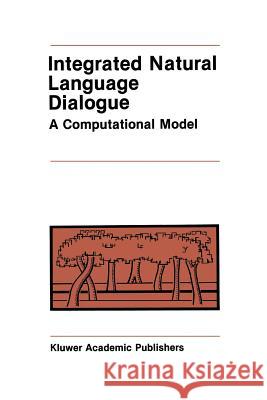Integrated Natural Language Dialogue: A Computational Model » książka
Integrated Natural Language Dialogue: A Computational Model
ISBN-13: 9781461292036 / Angielski / Miękka / 2011 / 180 str.
Integrated Natural Language Dialogue: A Computational Model
ISBN-13: 9781461292036 / Angielski / Miękka / 2011 / 180 str.
(netto: 575,06 VAT: 5%)
Najniższa cena z 30 dni: 578,30
ok. 22 dni roboczych
Bez gwarancji dostawy przed świętami
Darmowa dostawa!
Natural language dialogue is a continuous, unified phenomenon. Speakers use their conversational context to simplify individual utterances through a number of linguistic devices, including ellipsis and definite references. Yet most computational systems for using natural language treat individual utterances as separate entities, and have distinctly separate processes for handling ellipsis, definite references, and other dialogue phenomena. This book, a slightly revised version of the Ph. D. dissertation that I completed in December 1986, describes a different approach. It presents a computational system, Psli3, that uses the uniform framework of a production system architecture to carry out natural language understanding and generation in a well-integrated way. This is demonstrated primarily through intersentential ellipsis resolution, in addition to examples of definite reference resolution and interactive error correction. The system's conversational context arises naturally as the result of the persistence of the internal representations of previous utterances in working memory. Natural language input is interpreted within this framework using a modification of the syntactic technique of chart parsing, extended to include semantics, and adapted to the production system architecture. This technique, called semantic chart parsing, provides a graceful way of handling ambiguity within this architecture, and allows separate knowledge sources to interact smoothly across different utterances in a highly integrated fashion. xvi Integrated Natural Language Dialogue The design of this system demonstrates how flexible and natural user interactions can be carried out using a system with a naturally flexible control structure.











